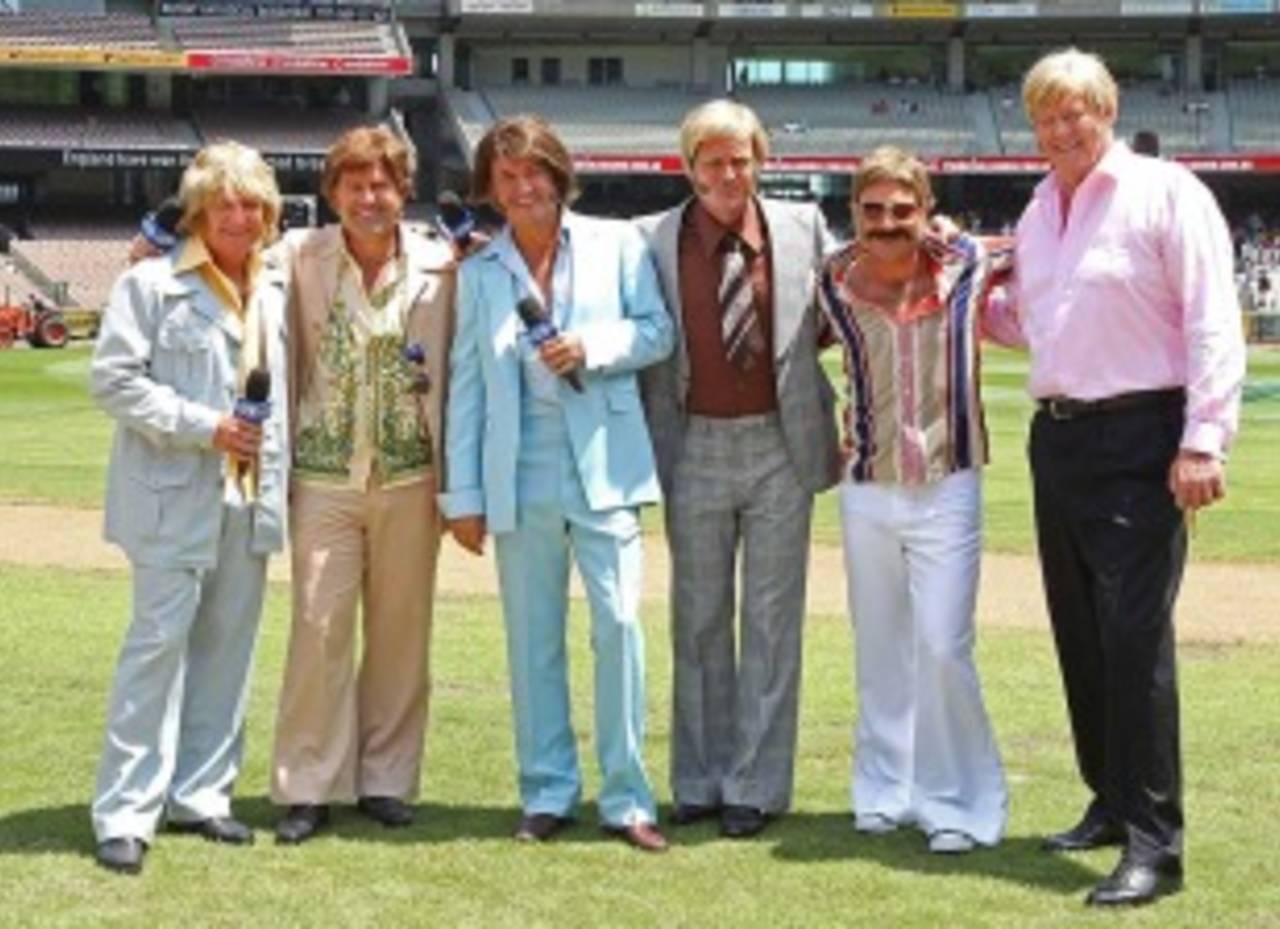The flare(s) of one-day cricket
Headbands were cool again in Melbourne
Andrew McGlashan
25-Feb-2013

Let's boogie: The Channel Nine commentators dug deep into their wardrobes • Getty Images
Headbands were cool again in Melbourne. At least for a day. The opening one-day international between Australia and England was used to mark the 40th anniversary of ODI cricket which began on January 5, 1971 by accident after the MCG Test was washed out. Nobody knew at the time the monster that had been created.
As part of the commemorations all the Australia team from that match, minus Rod Marsh, gathered at Government House in Melbourne and John Edrich, Man of the Match in 1971, flew in from England. “We didn’t want to play,” Edrich said, “We were there to win the Ashes and Ray Illingworth [the captain] didn’t want to risk his quick bowlers in damp conditions.”
Bill Lawry was the Australia skipper and said that Geoff Boycott’s response to playing the match was a succinct “p**s off” as the England cricketers took some persuading from Don Bradman. Lawry and Keith Stackpole had actually been sat with their pads on for three days watching the rain because the toss had taken place for the Test and Australia sent in.
Stackpole ended up taking 3 for 40 with his leg spin in the one-day match – played as 40 eight-ball overs – and England were bowled out for 190. Ian Chappell hit 60 off 103 balls in the run chase with Australia winning with 5.2 overs to spare in front of 46,000 walk-up spectators. The administrators sensed they were onto something.
Four years later the first World Cup was played in England and two years after that, the revolution really kicked in with Kerry Packer’s World Series Cricket. The WSC model became the standard for one-day cricket – although England’s home internationals were played over 55 overs until 1996 – but the format has continued to evolve into what we see today.
“The one-day form of the game has proved to be very resilient and highly entertaining,” Andrew Strauss said. “In this day and age people look at Twenty20 and talk about how successful and what a big impact it’s made on the game of cricket.
“But 50-overs has been the mainstay over the last 20-30 years and there’s been so many great matches and competitive series. It’s been a great addition to the game of cricket and for us to be here 40 years on and playing the game with a massive World Cup around the corner is pretty exciting, there’s no doubt about that.”
The Channel Nine commentators got fully into the spirit as they dressed in 1970s outfits, led by Mark Nicholas who presided over the toss in a bright blue suit with large flares. It’s hard to know if they were a true replica of what the fans were wearing in 1971 because that broadcast was in black and white. Judging by Nicholas’s outfit, maybe that was a good thing.
Andrew McGlashan is an assistant editor at ESPNcricinfo